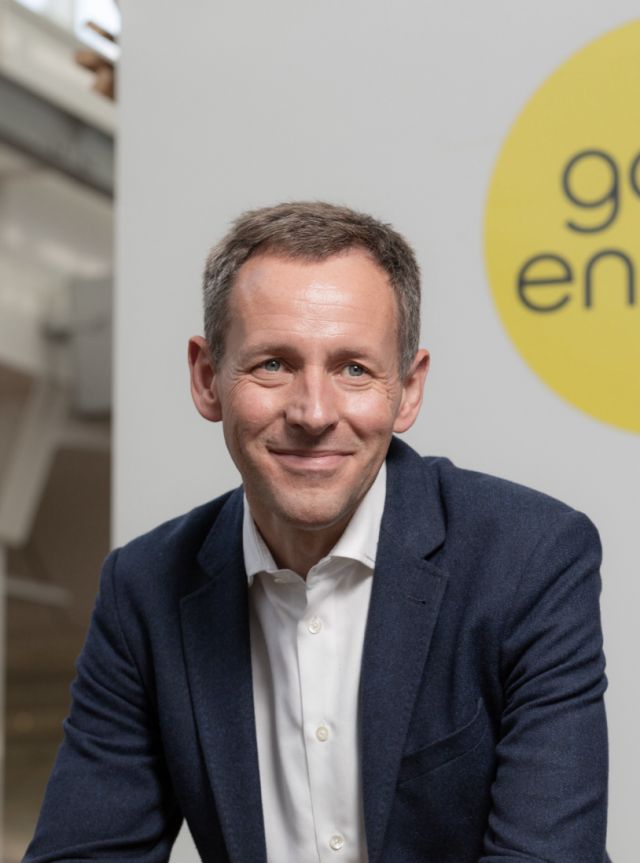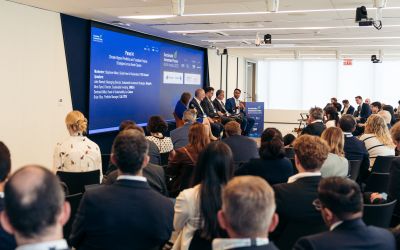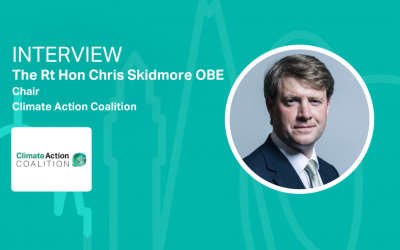Nigel Pocklington on Small-Scale Solar and Smart Grids in the Race to Net Zero
Good Energy CEO Nigel Pocklington says the future of clean power lies on our rooftops - with solar and smart tech driving change - but warns the UK must fix its grid fast to hit 2030 goals.

How do you see the role of everyday households and communities in driving the energy transition?
Public resistance to the energy transition has been heavily exaggerated to further political ends — the vast majority of people are supportive of cleaner power and the benefits it brings. But the energy crisis showed clearly that if we don’t bring people and communities along with us, the mission to decarbonise will have failed.
So we need to involve real people for sociological and political reasons. But also for practical reasons. Small scale solar is the unsung green hero of the transition. Put solar on a household rooftop and people see the energy savings, but they also — on average — become a net contributor to cutting the countries carbon.
In what ways is the rise of smart technology, like predictive grid tools and AI, transforming how we produce and consume power?
We are moving from a centralised energy system, where a few power stations supplied electricity to millions of households, to one where there are millions of nodes in the system all generating, using, storing and sharing power. We need smart technology to enable all of that.
Today a few early adopters are switching to flexible and time of use tariffs and using spreadsheets to analyse what the best export tariff is for them, but for the mainstream it needs to just work. That’s where predictive tools and AI will come in.
How do we make the grid fit for a solar-powered future?
Our grid in the UK is a terribly aging piece of infrastructure with some quite archaic rules around connections. We need to make it much easier to connect and share energy and properly digitise the entire system.
As energy users become energy participants, what does that mean for the traditional supplier-customer relationship?
In the industry we call it ‘energy as a service’ but what that essentially means is your energy supplier is not just your supplier anymore. They help you with installing technology in your home or business, then optimise it to ensure you have energy when you need it and get the best value low carbon power.
What are the biggest hurdles to getting to a more decentralised and data-driven energy system and how is Good Energy working to overcome them?
Our aging grid is the biggest hurdle, and as Good Energy is not a network operator there isn’t much we can do on that other than advocate. Thankfully it is well recognised. The next is smart meter adoption, which unfortunately has hit a point of saturation. We have spent many years educating and espousing the virtues of smart but that now requires some thinking. For the time being we have some of the best figures for operational smart meters in the industry.
We are also pioneering data with business customers, for whom we launched hourly renewable matching over a year ago. Showing them how their electricity demand matches up to renewable power generation in hourly intervals, so they know when to shift their usage. We’ve now launched Hourly Matching Credit, which incentivises customer and generator to shift demand and export power when its needed respectively.
Similarly, if we're to unlock the full potential of rooftop solar and local generation, what needs to change?
I’m pleased to say a lot of it is already in process. Government has essentially mandated solar on new builds in the UK and is looking at finance options for the market. It has published its Solar Roadmap and is setting up a Solar Council. Frankly we need to get on with the work.
How do you envision the role of Esyasoft in helping you, as well as wider targets of tripling renewable capacity by 2030?
As a technology company Esyasoft can enable all the smart grid, AI driven predictive grid tools that are going to become increasingly essential. This is going to help us scale up things like the size of business customers we can serve, and as a global company it will help internationally with the aim of tripling renewable capacity.
Looking ahead, how do you balance the need for scale with the importance of keeping energy local, accessible, and democratic?
I don’t think they are contradictory. We need measures to ensure lower income households and community have access to clean energy tech through schemes like the Warm Homes Plan. As long as people can see the benefits clean power brings to their community, support for decarbonising our energy systems will remain.
What’s the risk if we don’t scale small-scale fast enough?
The risk is we lose democratic support for clean power because people do not see the benefits first hand. And the ultimate risk is we fail to decarbonise our energy systems, which in turn worsens the impacts of climate change.
What excites you most about where Good Energy is headed next?
Good Energy has been a pioneering business for over 25 years, helping to drive the renewable revolution, but our impact has been relatively small scale. I believe we have an outsized influence but we only represent a very small portion of the energy supply market in the UK. The next stage will see that hugely ramped up and I am very excited to see what scaling up our genuinely green model will do to the growth of renewables as we shoot towards clean power by 2030 in the UK.


_400_250_s_c1.png)



